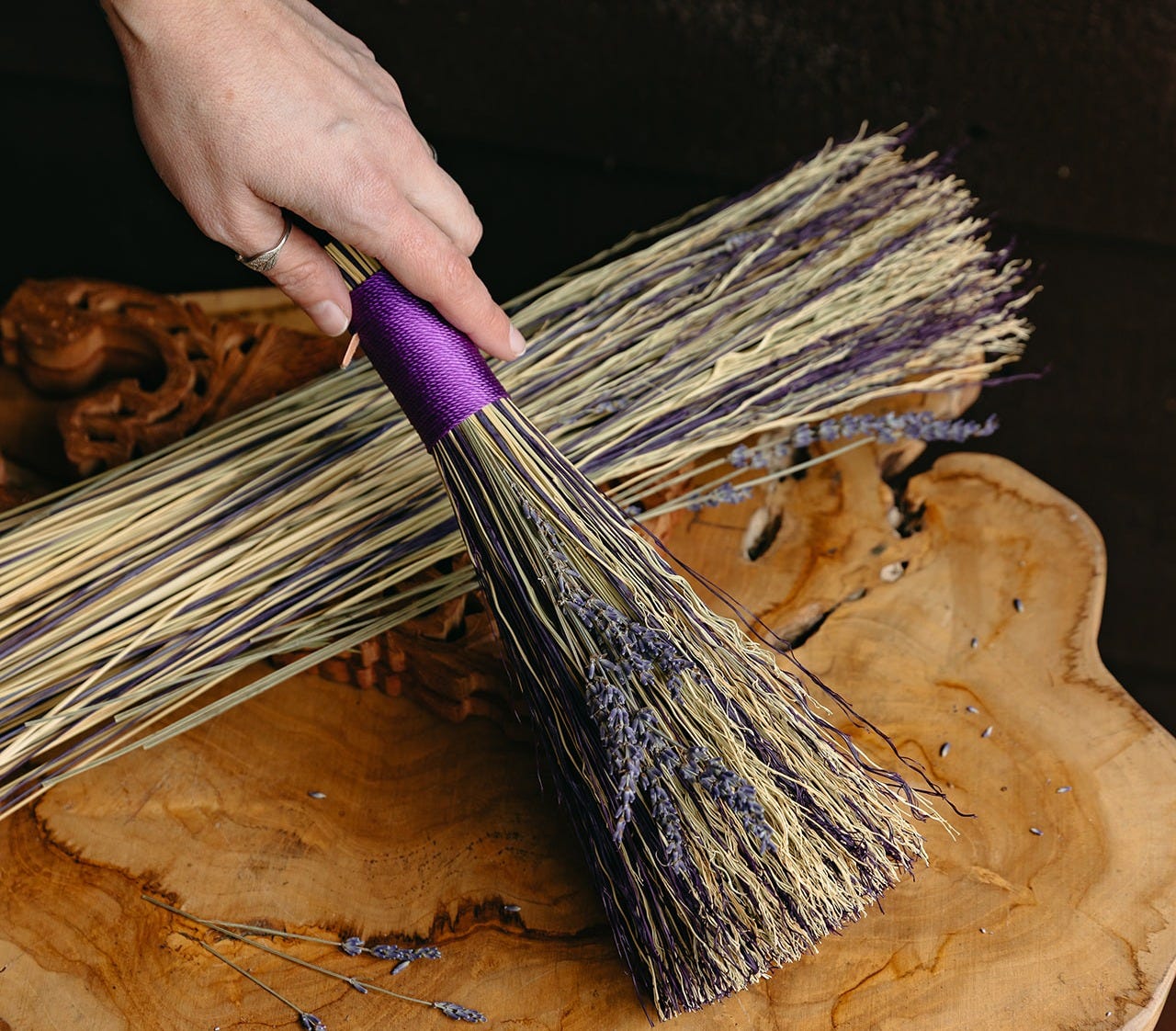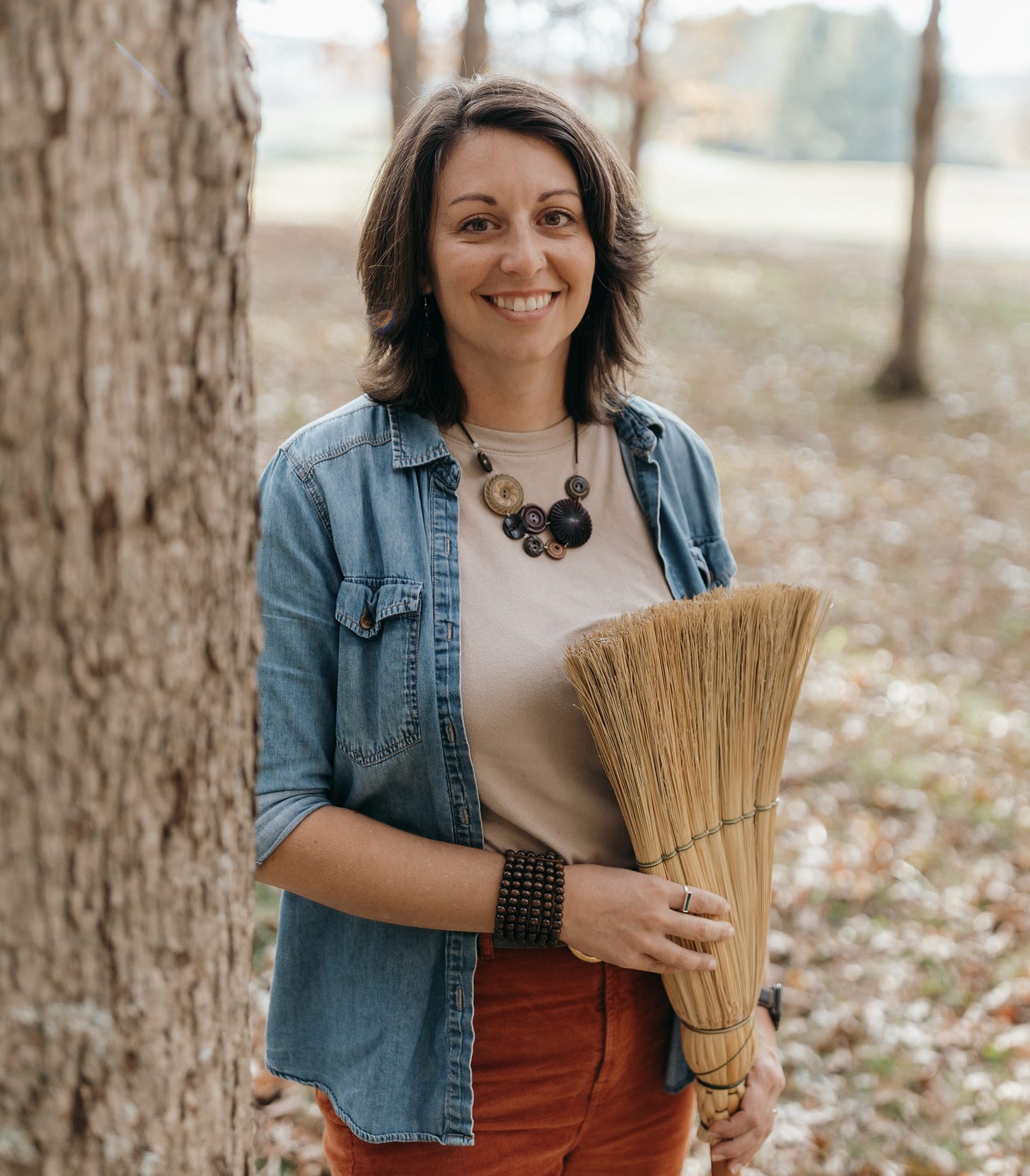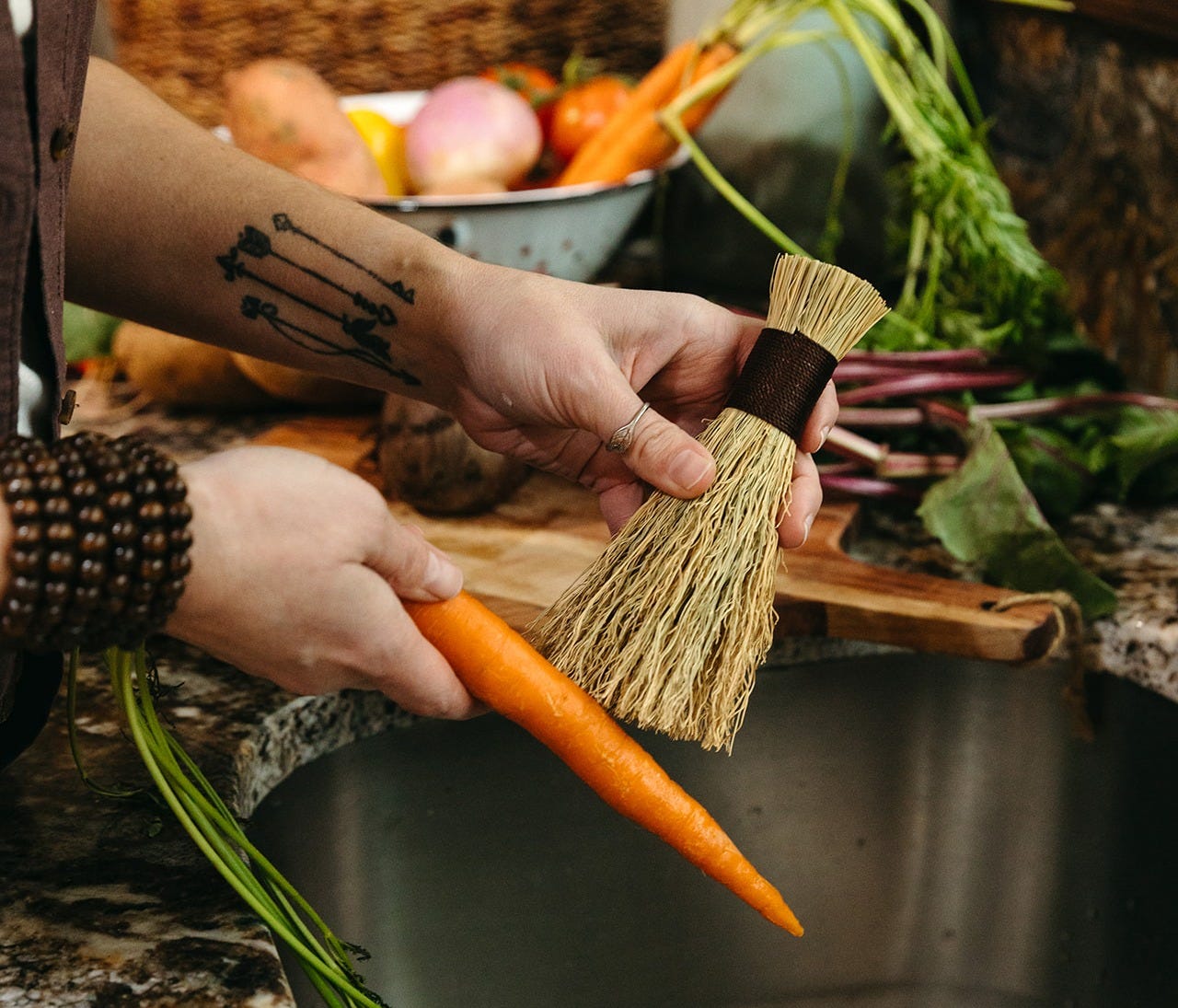Traditional Broom Making
A conversation with Laurel Ridge Studios owner Erin Simons
Introduction and interview by Elizabeth Poland Shugg • Photos provided by Erin Simons
Erin Simons makes traditional Appalachian brooms and brushes in her Wytheville, Virginia, studio using found objects, fallen limbs, shed antlers, broomcorn, and twine. You’ll find her Appalachia treasures in Laurel Ridge Studios, of which she is owner. Here’s our conversation with her about how she got started and why she remains dedicated to preserving this regional tradition.
How long have you been making handcrafted Appalachian brooms, brushes, whisks, and other accessories?
I’ve been making Traditional Appalachian Brooms, brushes, and whisks for three years. I create brooms that connect me to the land and the heritage of this region. Each piece is a blend of function and beauty, honoring a tradition that has been passed down through generations. I learned this craft from my mentor, John Alexander.
How long does it take to make a broom or whisk, and do you let tradition or the creative process guide your work—or both?
I let both creativity and traditional techniques guide my work. The time it takes to make a broom, brush, or whisk varies greatly depending on the level of difficulty in the design. Each broom/brush/whisk is hand constructed and no machines or electricity are used. Also, 90% of the process of making a broom is in the prepwork—before ever sitting down to make the piece.
The materials needed to make a traditional Appalachian broom are simple: a sharp knife, scissors, twine, broom corn, a handle, and a strong spindle or stick to use as a foot brake for tying the broom. The broomcorn must be sorted by size and quality, then separated by weight or amount depending on the item being made. Then the spindle or strong stick is wrapped with twine. When making a sweeper, the broomcorn must be soaked for thirty minutes to one hour in hot water to make it pliable for weaving.





